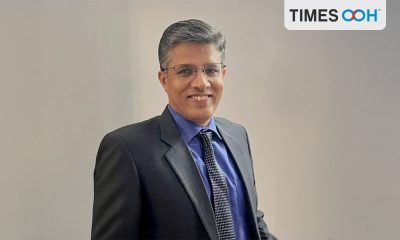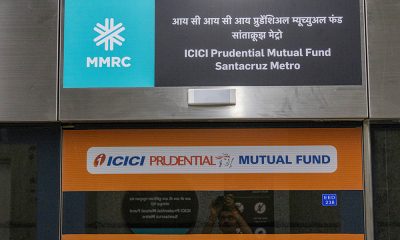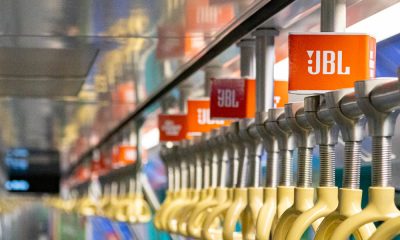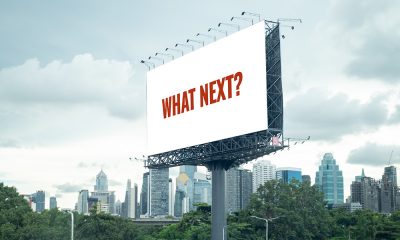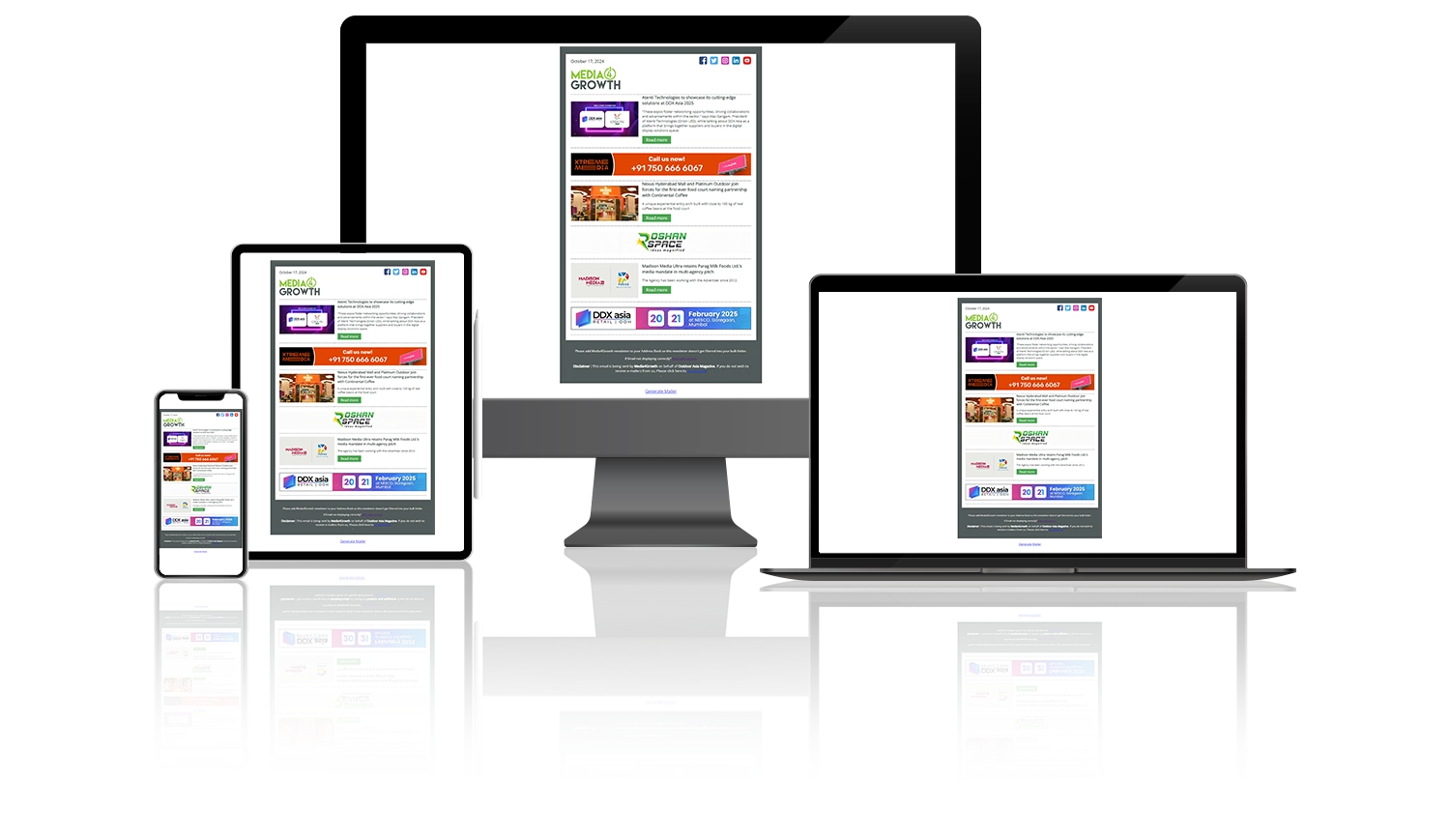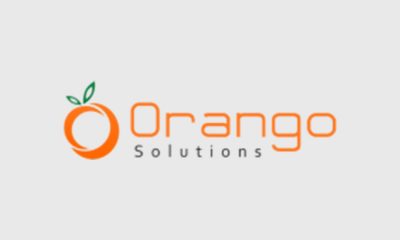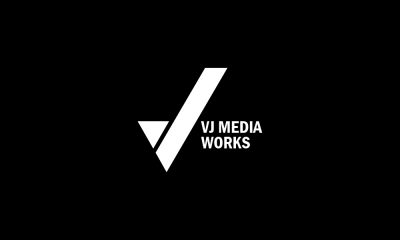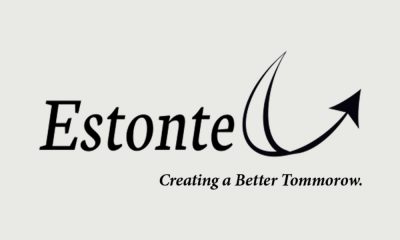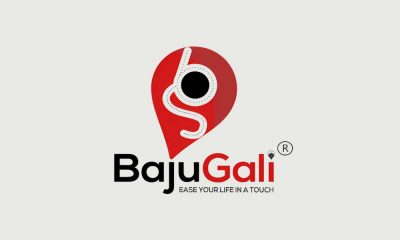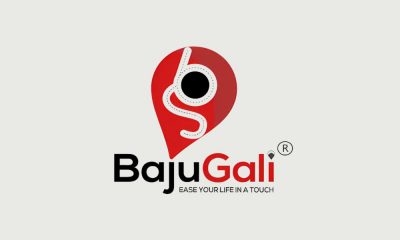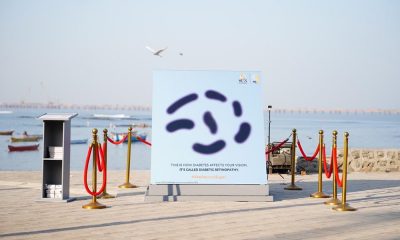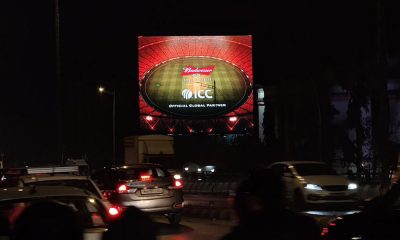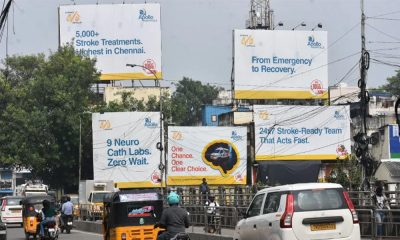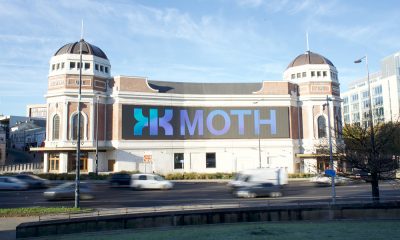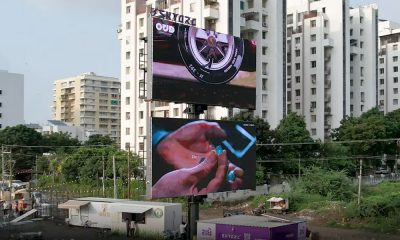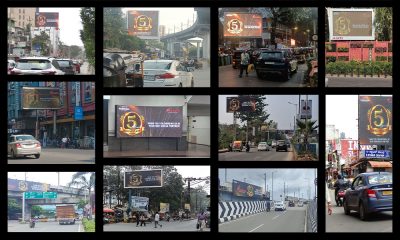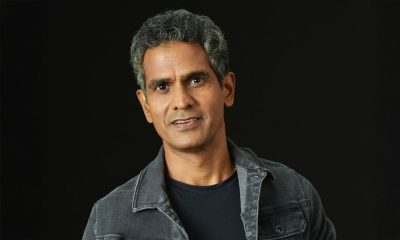Contracts & Investments
Times OOH: Trailblazing the fast lane
Times OOH senior management talks about what it took to grow the company’s turnover ten-fold in a matter of 7 years
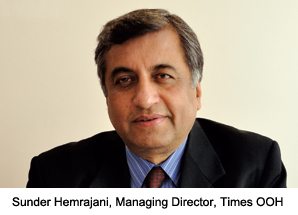 From Rs 30 crore to Rs 300 crore in 7 years! The Times OOH growth story is a marvel in the annals of Indian OOH industry. A little over seven years ago when Sunder Hemrajani, Managing Director, Times OOH, took charge of the company’s operations, it was all about competing in a highly commoditised OOH business. “Then, the company had bus shelters in Mumbai, a few assets in Pune, rights on the DND Flyway, among others. Our turnover in FY07 stood at Rs 30 crore, he recalls.
From Rs 30 crore to Rs 300 crore in 7 years! The Times OOH growth story is a marvel in the annals of Indian OOH industry. A little over seven years ago when Sunder Hemrajani, Managing Director, Times OOH, took charge of the company’s operations, it was all about competing in a highly commoditised OOH business. “Then, the company had bus shelters in Mumbai, a few assets in Pune, rights on the DND Flyway, among others. Our turnover in FY07 stood at Rs 30 crore, he recalls.
In March-April 2007, Times OOH took a big leap forward with the acquisition of advertising rights in Delhi’s Indira Gandhi International Airport and Mumbai’s international airport. “At that stage, we were looking to acquire all kinds of assets – airport media, street furniture, billboards, etc., and we planned to do business in some 15 cities. But the economic meltdown that began in August-September 2008 put paid to our plans, recounts Hemrajani.
Times OOH found itself saddled with high inventory. “We had by then acquired assets in Hyderabad, bus shelters in Bangalore, BRT Corridor in New Delhi, a few bus shelters in Chandigarh, and so on. Our revenues dipped and the rough period continued well into 2009, he says.
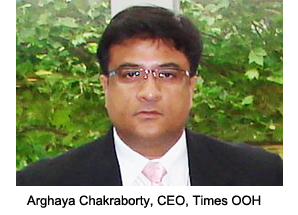 Challenging times called for bold decisions. Having assessed the future of OOH business in India, the company’s top management decided to jettison some of its loss-making properties like assets in Jaipur and Kolkata, BRT Corridor rights, rights to NDMC pole kiosks, etc. At the same time, the management decided to hold its rates and not capitulate under pricing pressure in a falling market – unlike what many other media owning firms did. Instead, the company decided to offer higher value proposition to brand owners through innovation and opportunities for customer engagement.
Challenging times called for bold decisions. Having assessed the future of OOH business in India, the company’s top management decided to jettison some of its loss-making properties like assets in Jaipur and Kolkata, BRT Corridor rights, rights to NDMC pole kiosks, etc. At the same time, the management decided to hold its rates and not capitulate under pricing pressure in a falling market – unlike what many other media owning firms did. Instead, the company decided to offer higher value proposition to brand owners through innovation and opportunities for customer engagement.
Times OOH’s trained its focus on transit media like airport media, Metro media, and the like. “We were convinced that in the long-term this segment would attract large investments, he says. It was expected that the Central government would privatise many of the airports in key cities that in turn would open up new OOH business opportunities.
The company also decided to focus on doing business in six cities and not 15 as was the plan earlier. “We also decided that we would consider opportunities in street furniture and billboards segment only if they were exclusive, he says. That explains Times OOH’s acquisition of rights on DND Flyway and recently, Yamuna Expressway.
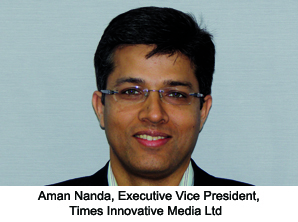 This strategy yielded rich dividends to the company, wherein the turnover grew ten-fold, from Rs 30 crore in FY07 to over Rs 300 crore in FY14. By March 2014, some of the key properties that Times OOH had in its ambit were the airports in Delhi and Mumbai, Delhi Metro, Yamuna Expressway, DND Flyway, the just acquired rights on Mumbai Metro, Patel Bridge and some 1,300 bqs in Mumbai, bqs in Hyderabad bqs and Metro pillars in Chennai.
This strategy yielded rich dividends to the company, wherein the turnover grew ten-fold, from Rs 30 crore in FY07 to over Rs 300 crore in FY14. By March 2014, some of the key properties that Times OOH had in its ambit were the airports in Delhi and Mumbai, Delhi Metro, Yamuna Expressway, DND Flyway, the just acquired rights on Mumbai Metro, Patel Bridge and some 1,300 bqs in Mumbai, bqs in Hyderabad bqs and Metro pillars in Chennai.
At the same time, Times OOH started to look at business opportunities in Tier II cities through tie-ups with ley local players. For instance, the company tied up with a major player in Ahmedabad whereby Times OOH would market those properties and do business with the local player and leverage the vast customer base it had built over time. The overriding objective of this strategy was to gain a firm foothold in promising Tier II markets and follow it up with moves to acquire premium business like airport media.
Arghaya Chakraborty, CEO, Times OOH, asserts that as the Metro networks begin and subsequently expand in key cities like Chennai, Bangalore and Hyderabad, the company will direct every effort to leverage the opportunities in this segment of transit media. However, he adds that while “while we make new acquisitions, we will also continuously evaluate the innovation possibilities in our current assets, largely around digital and interactivity. This will accelerate the company’s organic growth.
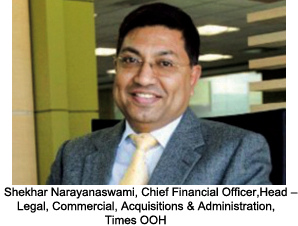 “Organic growth will give us 15-20 per cent. But we are hungry for more, says Chakraborty. Hence, he says several acquisitions are in the pipeline.
“Organic growth will give us 15-20 per cent. But we are hungry for more, says Chakraborty. Hence, he says several acquisitions are in the pipeline.
Commenting on the emerging OOH business opportunities,Chakraborty points out that different state governments are working on various PPP project proposals that will throw up new businesses in the non-metro cities. “While we have not operated in those segments, going forward we will likely consider some of them, he says.
As regards digital OOH business, he is of the firm view that it is still at a nascent stage in India. “Except for the UK and some parts of Europe, digital is something that all OOH firms are just learning. Having said that, while markets around the globe are gradually adopting digital OOH, India could leapfrog in this space, he says, while adding that “there aren’t many global learnings because the world is just learning. But digital is the future as brands now seek interactivity instead of plain vanilla sites.
Customer Centricity
The company’s strategic media acquisition plan is complemented by its sharp customer focus. “Customer-centricity is an important pillar of our strategy, says Hemrajani. “We listen to our brand owners and we offer solutions that enhance customer awareness of the brand. With the kind of media that we have, we also create engagement opportunities, and even customer experience of a brand, he adds.
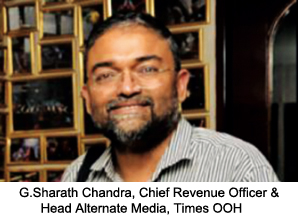 “If a brand can be experienced in a controlled environment, a brand manager will be willing to give you top dollars, says Hemrajani. He explains that when a leading auto major put a car on display at the Mumbai airport, the company collected 1,100 leads that paved the way for around 400 test rides. “Even if 20 cars were sold through this initiative, that would be a good number, he says.
“If a brand can be experienced in a controlled environment, a brand manager will be willing to give you top dollars, says Hemrajani. He explains that when a leading auto major put a car on display at the Mumbai airport, the company collected 1,100 leads that paved the way for around 400 test rides. “Even if 20 cars were sold through this initiative, that would be a good number, he says.
Likewise, a real estate firm reportedly sold some 30 luxury apartments in about two months after they put a model of their property in the airport, he informs.”We did a roadblock for a major telecom services provider and later our research revealed that the brand had the highest top-of-the- mind recall at the airport, he points out.
To set the ground for these offerings, Times OOH conducts periodic research on the use of its media properties and makes high quality collaterals, which are then shared with customers through various’customer connect’ programmes. “We do our research through independent agencies, and we make walk-throughs that no other media owner here does, says Aman Nanda, Head of Strategy & Business Development, Times OOH.
Right through, Times OOH management keep an eagle’s eye on productivity improvements.
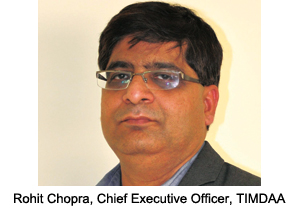 Shekhar Narayanaswami, Chief Financial Officer, Head – Legal, Commercial, Acquisitions & Administration, Times OOH, says that “whatever we have achieved is not by accident. Productivity had to be an organisation-wide initiative. It involved people, properties, processes and financials.
Shekhar Narayanaswami, Chief Financial Officer, Head – Legal, Commercial, Acquisitions & Administration, Times OOH, says that “whatever we have achieved is not by accident. Productivity had to be an organisation-wide initiative. It involved people, properties, processes and financials.
First, the company worked on arriving at the right mix – of markets, properties, and products. While certain properties were pegged to revenue-sharing agreements, certain others were based on minimum guarantees. Hence, the sales and revenue strategies had to be drawn up keeping in view all these factors.
Secondly, the company broadbased the P&L ownership within the organization. “We made all senior sales people owners of profit. This was one form of empowerment. We created both revenue and profit KRAs for our people, explains Narayanaswami.
“We made P&L budgets for each person at the beginning of the year, he states, adding that if anyone asked for investments, then the interest cost was added on to their budget. Thus, everyone became conscious of the profitability factor, and “discounting came down from 20 per cent to 12 per cent.
Talking about some of the cost saving initiatives, Narayanaswami says the company opted for LED conversion of its sites with the goal of achieving a payback in 18 months. While this involved huge investments, the company expected to save on electricity charges in a big way.
Further, the company also took up reverse auction to get the best offers before making any capex on its properties.
Times OOH values its partnerships with different vendors. “We look at our vendors as partners, and we develop vendors locally, helping them develop high quality products and services at reasonable costs, says Narayanaswami.
Sharing his views on the revenue growth prospects, G.Sharath Chandra, Chief Revenue Officer & Head Alternate Media, Times OOH, says, “When the business sectors do well, so do we. Interestingly, business of high-end brands — be they real estate, auto, personal accessories, designer wear, etc., auto, etc.– are not as volatile as other brands. So, super-luxury real estate properties upwards of Rs 25 crore continue to get launched.Luxury cars like Jaguar Landrover, Bentley, and others continue to reach out to their target buyers.
Chandra points out that luxury brands like BMW, and Jaguar Landrover “have been with us and continue tobe with us. So is the case with top-end telecom and consumer durables – Apple with iPhone, Samsung with curved its TV, and so on.
Commenting on Times OOH’s strident steps in the airport media space, Rohit Chopra, Chief Executive Officer, TIMDAA (A joint venture between Times and Delhi International Airport Ltd), says, “On one hand we are working on improving our relationships. And on the other, we are striking agreements with agencies so that we get access to their clients.
“We need to retain clients we have done business with and make them spend more by extending offerings and services like digital media, research data, etc.
He points out that in the airport media space, key advertising categories are consumer durables, automobiles, and real estate. “Ecommerce and travel portals are now emerging as a new category, says Chopra.
Chopra states that luxury brands are also bullish on airport media. “We are holding many more rounds of discussions with luxury brands, he says.
Pertinent to note that Times OOH has also put in place a robust CRM to raise its responsiveness to customer needs, efficiency and productivity levels. Narayanaswamiexplains that the top management took cognizance of the need for implementing a robust CRM system way back in 2007 but the meltdown pushed back the plan. Eventually, when the decision was taken to adopt a CRM system, it was felt that the system “needed to be driven from the top with everyone’s buy in, he says, adding that the objective was also to ensure that the sales database became the company’s property and not that of the individual sales people. The system would also give everyone clear visibility on the client calls and engagements. “The CRM system thus acted as a moral check on people, he says.
Today, the system can throw up numbers like revenues for the current month or next with nearly 90 per cent accuracy. Importantly, the entire sales team now uses the CRM system. Going forward, plans are afoot to implement a mobile app that will enable the sales people to access data real-time when out in the field. Times OOH implemented the salesforce.com CRM solution, and trained the users on its applications and functions.
People First
People form the fulcrum of the company’s business. The 200+ people working in the organisation have had the opportunity to enhance their capabilities by virtue of various HR initiatives by the top management. Chakraborty says that most of the top management people having worked with leading companies strongly believe in a people-focused approach.
To augment the team’s all-round capabilities, the company runs:
- Training programmes on specific domains like digital OOH media. The team is also trained on matters like making high impact presentations. Some of the people are nominated for courses conducted in India by Harvard Business School.
- Management Trainee programme for creating a large pool of highly talented people, preparing them to take leadership positions very quickly. The company recruits young talent from leading B-schools like XLRI, IIM Lucknow, MDI Gurgaon, FMS.
- A well-defined Performance Management System (PMS) for promoting an open and transparent organisation. The company announces structural rewards and recognition, as also gives away’shabaash awards to the high performers during townhalls.
Looking Ahead
Chandra says that as the country accelerates its physical infrastructure development, new and compelling OOH growth opportunities will come up. Also, with the new Government having got a clear mandate is expected to introduce industry-enabling policies that in the immediate run will spur GDP growth. High economic growth will translate into more ad spends, benefitting all players in the business. “Times OOH as a clear leader in the industry will be no doubt benefit in a big way from rapid GDP growth, he says.
Times OOH has adroitly leveraged the opportunities that came up on the dynamically changing OOH landscape. Way back in 2007, around the time when Hemrajani joined the company, transit media accounted for about 14 per cent of industry business, whereas billboards held a 60 per cent share, with the rest accounted for by street furniture projects. By FY13, transit media’s share had increased to 30 per cent, while billboards’ share fell to 55 per cent. “All this, thanks to airport media, says Hemrajani.
With a turnover in excess of Rs 300 crore, Times OOH commands nearly 18-20 per cent share of the industry’s estimated annual turnover of Rs 1,500-1,600 crore (ex. aggregate agency commissions).
The top management has now set sights on doubling its turnover over the next 5 years. This would have to be achieved not through acquisition alone, but also by maximizing the returns on its existing assets, says Hemrajani.He explains that most media owners tend to focus on the supply side, whereas the opportunity lies in driving demand growth.
The company has invested more than Rs 200 crore in the airport business.Chakraborty says, “We believe we understand the airport business very well, so we are rightly placed to capture that business and grow.
While these investments are no doubt catalysing the company’s growth, the top management also believes that its unalloyed focus on quality and exclusivity will also change the way the Indian OOH industry functions. “We hope that the industry’s share of the overall advertising pie will rise to at least 8 per cent in the foreseeable future, says Hemrajani on a concluding note.
